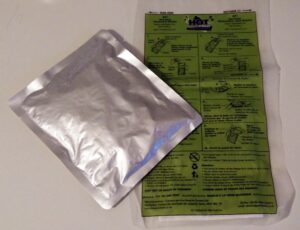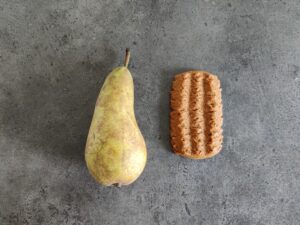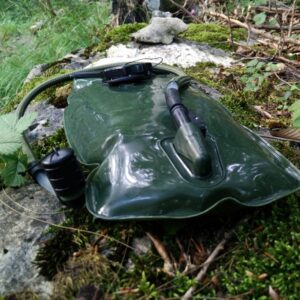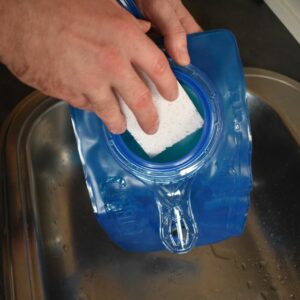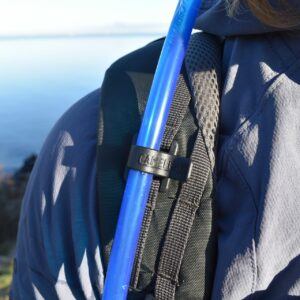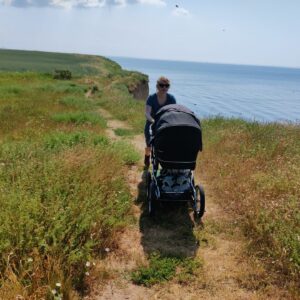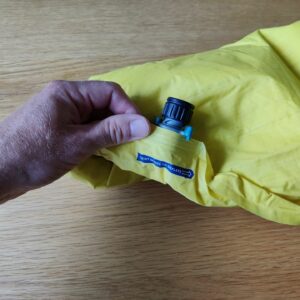On an easy day hike, you can bring just about any kind and amount of food you wish, whether it is merely a light snack or a 4-course picnic because you will probably have plenty of space in your backpack. However, multi-day hikes require some nutritional planning and preparation, because it is often not possible to resupply en route, and you don’t want bring neither too much (heavy) nor too little food with you. You also don’t want to bring too bulky food items as they will take up valuable space in your backpack. In this article we’ll explain how to choose food for multi-day hikes, assuming that resupply on route is not possible. We’ll also provide you with some basic information about nutrition for hikers and mountaineers.
For general information about planning a hiking trip, please read How to plan a hiking trip.
How much food to take?
You need enough food to approximately compensate for the energy you burn. The amount of burned energy during a hike greatly depends on the person itself (weight, age, sex) and the trail (duration, ascend/descend, altitude). We will explain how to calculate your Total Energy Requirement (TER) by including your Basal Metabolic Rate (BMR) and assessed physical activity level (PAL).
The average energy requirement for an individual at rest can be estimated by calculating the Basal Metabolic Rate (BMR) which takes your weight, age and sex into regard. The easiest way to calculate your BMR is to use one of the calculators available online. You of course have higher energy consumption when hiking than at rest; to assess this, your BMR value has to be multiplied by a physical activity level (PAL).
The PAL number is based on estimation rather than calculation and goes from 1 up to around 4.0 – which is the value for athletes in periods of extreme physical training. During an average multi-day hiking trip you can expect that the PAL index to be between 2.0 and 3.0 – depending on the duration, physical intensity and altitude of your trail. After assessing the PAL index, it should be multiplied with the BMR; the result is the Total Energy Requirement (TER). See the example below.
Example: 5 Days Long Hiking TripCalculating TER for a 30-year-old male hiker with body weight of 80 kg (176 lbs)
Basal Metabolic Rate (BMR): 1.858 kilocalories (determined by using online calculator).
Estimated Physical Activity Level (PAL): 2.5
Total Energy Requirements (TER) per day: 1858 X 2.5 = 4.645 kilocalories
Total Energy Requirements (TER) for five-day trip: 5 x 4645 = 23.225 kilocalories
The example above shows that the hiker can expect to burn approximately 23225 kilocalories altogether on his hiking trip.
Please note that the TER expresses an estimation of the kilocalories burned and not how many kilocalories you necessarily should consume during the trip. It’s normal that you face a calorie deficit on hiking trips and thus lose some weight – a 7000 kilocalorie deficit equals to losing 1kg of body weight. However, the calorie deficit shouldn’t be too big as this could significantly slow you down and make you feel tired and worn out. It is impossible to define the maximum “healthy” calorie deficit as it depends greatly on the individual person and his/hers physical stamina, but you should be safe with a 1000 to 2000 kilocalorie deficit per day on trips that last for less than 10 days. The shorter the hiking trip, the greater calorie deficit you can encounter without significant impact on your performance.
Continuing with the example from above, we will calculate how much kilocalories the hiker should bring along, if allowing for a 2000 kilocalorie deficit per day.
Total Energy Requirements (TER) per day minus daily calorie deficit = 4645 kilocalories – 2000 kilocalories = 2.645 kilocalories worth of food/liquid per day.
For five days: 5 x 2645 kilocalories = 13.225 kilocalories worth of food/liquid for the whole trip.
The hiker should bring 2.645 kilocalories worth of food/liquid per day and 13.225 kilocalories altogether.
What to consider when choosing food for a hiking trip?
Caloric Density
Caloric density tells us how much calories the food contains per one gram. The higher the caloric density of the food, the lighter it is for the same energy. To determine the calorie content of certain foods, you can use this calories chart.
Above, we calculated that the hiker should consume approximately 13.225 kilocalories on his five days long hiking trip. If he decides to cover his energy intake only by eating apples (low caloric density), he has to carry approximately 25 kilos of apples. On the other hand if he decides to cover this energy only by eating butter (high caloric density), he needs merely 1.8 kilos of butter. Of course a diet consisting only of butter (or apples!) is not the right approach: While hiking you need a balanced diet.
Balanced Diet
A balanced diet allows you to maintain your physical and mental well-being. The recommendation for a correct mix of macronutrients on a hiking trip is: 55 percent carbohydrate, 25 percent fat and 20 percent protein. Carbohydrates are essential for restoring muscle and liver glycogen on a daily basis; failure to restore these will result in diminished performance. Proteins are responsible for the growth and repair of body tissues, and fat is a great source of energy for low-intensity activities. Keep the 55/25/20 ratio in mind the when selecting food for a hiking trip – use the FoodData Central in order to get the information about macronutrients in specific food.
Spatial Density
Spatial density tells us how much calories the food contains per one cubic meter. The higher the spatial density of the food, the less space it takes for the same energy. Above we calculated that 25 kilos of apples equal to 1.8 kilos of butter in calories. 1.8 kilos of butter would also take less space than 25 kilos of apples as butter has higher spatial density than apples. For long hiking trips, you should choose food that has a high spatial density so that it doesn’t take too much space in your backpack.
Absorption Time
The glycemic index tells us how fast the food will be absorbed by your body – the higher it is, the faster the food will be absorbed and energy obtained. However, food with a high glycemic index doesn’t provide sustainable energy like food with low glycemic index , so you should pack foods with both high and low indexes respectively. Food with a high glycemic index should be consumed during the active part of the day, while food with a low glycemic index should be consumed for breakfast and dinner. To determine the glycemic index for various foods use this website.
Thermal Resistance
Keep in mind the thermal resistance when choosing food for a hiking trip: For example, some energy bars will freeze at low temperatures while others will melt at high temperatures. Select the food according to temperatures that you expect.
Preparation Time
Pack the right ratio of simple food (chocolate bars, biscuits etc.) and food that needs to be prepared (rice, pasta etc.). During the day, conditions often won’t allow you to prepare food while you’re on the move and thus it is convenient to have simple food within easy reach. When the tent is set up (or you are in a mountain hut) it is easier to prepare more “complicated” food.
When to eat
When hiking, it’s often hard to pursue a conventional 5-meals-a-day menu because conditions (rain, snow, wind and low temperatures) might not allow you to simply stop and take time for a meal. Therefore, it’s wise to have a large meal in the morning and/or evening (breakfast, dinner) when you are in a tent or a mountain hut. There it’s easier to prepare and eat food because you have some weather protection. During the day we recommend eating several, already prepared, small but calorically dense snacks such as for example chocolate bars, peanuts, bananas etc. It is also a good idea to increase your carbohydrate intake before the trip in order to get some reserve for the trip where you will most likely encounter a caloric deficit.
Taste
Taste is not the most important thing when it comes to food on hiking trips. However, try to include food with different flavors (salty, sweet) and textures (soft, crunchy) in order to break the monotony.
I’d love to hear your thoughts on what food to bring on a hike. Write them in the comments below.
